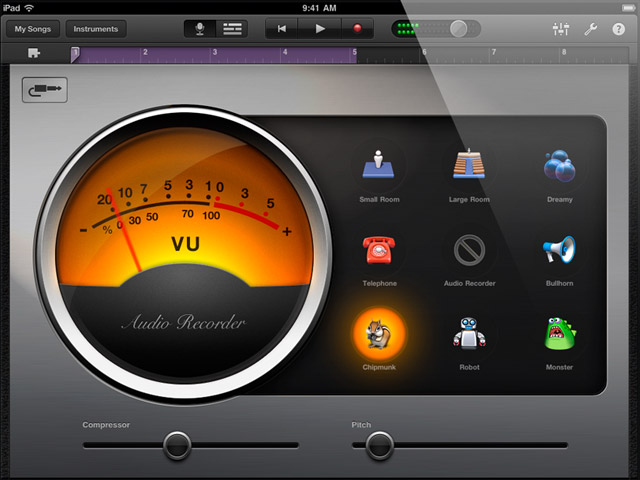This post is going to take you step by step through the process of how to record acoustic guitar and vocals at the same time with just one mic. The idea here is to capture the authenticity of your performance. Of course you might get a more perfect rendition of the song if you record multiple tracks. But that may be at the cost of spontaneity. You play and sing at the same time, so why not record what you do? This guide will also be useful for recording acoustic guitar and vocals for YouTube.
- Acoustic Guitar Songs
- Acoustic Guitar Lessons Youtube
- Acoustic Guitar Forum
- Record Guitar Garageband Iphone
Furthermore, you may not have a huge budget to record guitar and vocals simultaneously, and so this is a nice, inexpensive low-budget option. There is no doubt you get better results with multiple microphones, BUT that is more expensive, and certainly much more complicated. Here you will learn how to record acoustic guitar and vocals on a computer, iPad or smartphone using simple recording software like Audacity or Garageband. And the good news is you can easily do this on a small budget.
[The following content contains affiliate links. For more information, read our disclosure policy here.]
The Best Recording Equipment for Acoustic Guitar and Vocals
Option 1: Condenser Microphone + Audio Interface
The best microphone for recording vocals and acoustic guitar is a large diaphragm condenser microphone with cardioid pickup pattern. This type of microphone will be able to capture the nuance of your live performance. To record the guitar and vocals on your computer you will also need an audio interface. There are 2 key features the audio interface will require: an XLR Mic input with built-in preamp, and phantom power*. So make sure any interface you choose has both of these. Good examples of entry level interfaces include the Focusrite Scarlett Solo or the Presonus iTwo Audio Interface.
How To Record Guitar on a PC computer, Laptop, iPad or Mac. If you want to record electric or acoustic guitar or bass then read this step-by-step guide to the kit you need.
You will also need an XLR microphone cable and a good pair of closed-back studio headphones so that you can monitor your performance. Finally, to position the mic correctly, you will need a microphone stand with boom arm for easy adjustment.
If you are buying both the microphone and interface from scratch, then consider buying an all-in-one studio package (like the one pictured above) which comes with the interface, microphone, XLR cable and headphones plus recording software all in one box. This is a cost effective way of getting together all the recording equipment you will need. In fact these packs have been designed for recording and acoustic singer songwriter. Both the interfaces mentioned above are available in studio packs.
Option 1 summary of equipment required: Large diaphragm condenser mic; audio interface; XLR microphone cable; studio headphones; microphone stand
Option 2: Portable Digital Recorder
A portable digital recorder such as the Zoom H4N Pro really is a one-stop solution to record your guitar and vocals. With high quality built-in stereo microphones, you can literally just position the recorder and press record. This upwardly mobile bit of kit will also allow you to use your own microphones. It has two XLR inputs with excellent pre-amps. Plus it provides phantom power if you want to use a condenser mic. AND even better, you can use it as an audio interface too.
To record your guitar and vocals it will work best if you have a microphone stand. You will also need a little adapter as it is designed to fix onto a tripod. Or, if you own a camera tripod, why not just use that?
Option 2 summary of equipment required: Digital Recorder with built-in microphones (such as the H4N Pro) and optionally a microphone stand and tripod-mic stand adapter, OR camera tripod.
Option 3: USB Condenser Microphone
If you are on a tight budget, then buying all the separate components listed above might be too much. So instead you could invest in one good quality large diaphragm USB condenser microphone. This is a microphone that you can plug directly into your computer or, with the right adapter, an iPad, iPhone or android. A USB mic has a built-in interface, and also uses the USB power so nothing else is required to record. Go for the best quality you can, and preferably a USB mic with headphone port too.
Click here to directly compare all the best-selling USB mics available. You can listen to them all, and watch videos. And below are 4 of the best USB microphones to record guitar and vocals simultaneously in Garageband or similar software. All these have a headphone output too.
Rode NT-USB
Blue Yeti Pro USB/XLR Dual Format Mic

Option 2 summary of equipment required: USB Microphone; Studio Headphones (optional); Microphone Stand.
The Best Software For Recording and Mixing Acoustic Guitar and Vocals
Choosing the best recording software will depend on your recording experience. If you buy an audio interface then it will usually come with some basic recording software that will be more than adequate for recording your guitar and vocals. As you are not trying to record multiple tracks, but one good take of your performance, then simple recording software such as Audacity or Garageband will be perfectly good. To record on your iPad, there are numerous recording apps available. Another option is Pro Tools First or Reaper.
will be perfectly good. To record on your iPad, there are numerous recording apps available. Another option is Pro Tools First or Reaper.So in this case, the best recording software package is the one you have available. You will be able to record using your mic+interface or usb mic in ANY recording software once you have the hardware set up correctly. (Just read the step-by-step guide that comes with your hardware, or look at the Manufacturer’s page online for set-up advice)
Optimal Microphone Placement To Record Guitar and Vocals
The secret to a nicely balanced guitar and vocal recording with one mic is to get the height and distance of the microphone just right. This is why you will need a microphone stand to get the best results.- Make sure you have the microphone the correct way around. The cardioid pickup pattern means that only the front of the mic will be picking up a signal so make sure the front of the mic is pointing towards you.
- Do not place the microphone too near to the guitar (too low) or your mouth (too high). Aim for a mid-point between the two. The ‘best’ placement will vary subtly depending on whether your guitar is being strummed loudly, or if you have a more delicate finger-picking style. So you will have to experiment a little.
- Aim for a distance of 12 – 18 inches from you. (30 – 45 cm). Any nearer will be too close to pick up that balanced signal you are looking for.
- Check the meter in your recording software while you rehearse. Aim for a signal varying between 50-75% of the max. The MOST HORRIBLE sound when you record digitally is clipping. This means you are pushing the level too hard. If you are used to playing live with analog equipment, then pushing the levels is not so bad. But when you record on your computer, do leave a bit of headroom.
- Once you are set up, you can record yourself as many times as you like. If there is the odd error, then you can punch in corrections. You can also use your recording software to add a little reverb and EQ.
 Hopefully the above is enough information for you to pick the right gear, and get set up to start recording your guitar and vocals. Once you have got the basics sorted there may be a few more things to consider. For example:
Hopefully the above is enough information for you to pick the right gear, and get set up to start recording your guitar and vocals. Once you have got the basics sorted there may be a few more things to consider. For example:- Will a pop filter and/or shockmount help you to record better tracks?
- Once you have mastered recording a single take, should you think about trying to record multi-tracks of vocals and guitar, maybe against a click track?
- Maybe invest in a second mic, and experiment with placement to record the guitar and vocals on separate tracks while still playing live ….
- If you buy an audio interface, and you have an electro-acoustic guitar, then at the same time as recording through the mic, you can also, on a separate track, record the output of the guitar, so try that too.
Good luck!
*phantom power – is the power source required for condenser microphones. Most professional audio interfaces have a phantom power switch. Make sure the one you buy has this.
If you’re a guitarist who’s just getting started with GarageBand and are dying to jump in a start recording, you may be overwhelmed with the different gear options available to you.
Acoustic Guitar Songs
While many would argue that the only way to accurately capture an electric guitar performance is by mic’ing up your amplifier and hitting record, in my latest video I share 3 ways that you can directly input your guitar into your Mac so that you can record it in GarageBand.
Directly inputting (or ‘DI-ing’) your instrument in this way gives you more control over how your recording sounds if you choose to use Garageband’s built in amp designer and/or Audio Unit plug ins.
Acoustic Guitar Lessons Youtube
Check it out below:
You can find the gear mentioned in the video here:
TOOGOO(R) 3M Guitar to PC USB Recording Cable
IK Multimedia iRig Pro I/O
Acoustic Guitar Forum
Focusrite Scarlett 2i2
Record Guitar Garageband Iphone
How do you prefer to record your guitars in GarageBand? What gear do you use? Leave a comment and let me know or come join the conversation on Facebook and Twitter.